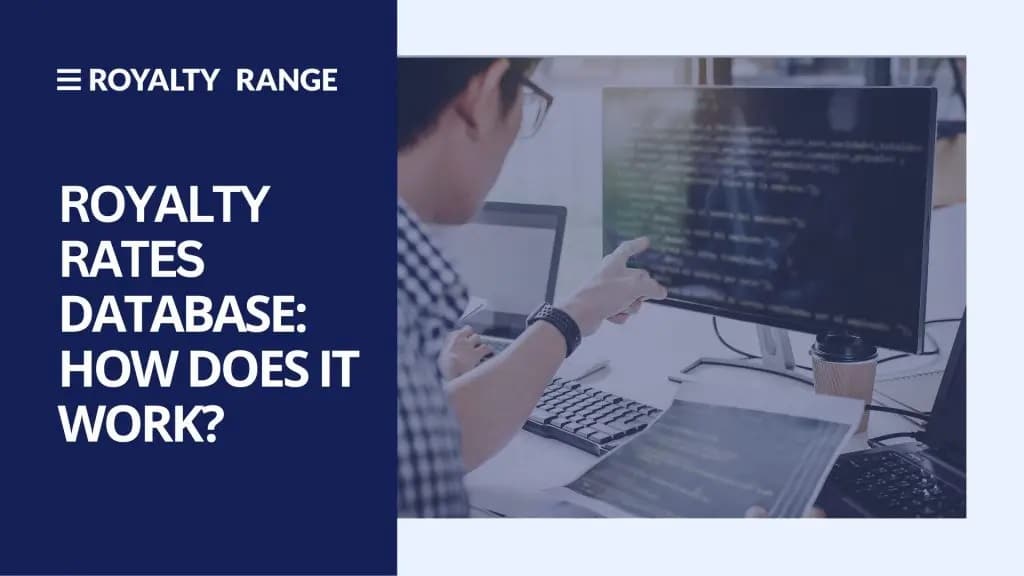Royalty Rates Database: how does it work?
October 16, 2023

Reliable and structured data is a key factor for multiple projects and tasks in today’s business environment. Premier quality Royalty Rates Database could be a solution for a more effective and easier workflow while making benchmarking studies, calculating interquartile ranges for your projects, or completing other assignments.
What is included in the royalty rates database?
The database consists of royalty rate reports that contain manually gathered and analyzed data, so each report is a result of deep and thorough analysis. The reports contain more than 50 detailed and standardized comparability factors of royalty rates and licensing terms. Each report is supplemented with original non-redacted agreements, as well as filings and other types of documents, from which the data is gathered. Each report contains a detailed analysis of the identification of intangibles and their legal owner; a characterization of the transaction involving the intangibles, and the royalty rate percentage; and a detailed functional, risk, cost, and asset analysis.
All the information contained within the RoyaltyRange database is fully compliant with the latest OECD BEPS guidance on the transfer pricing aspects of intangibles (Action 8), which was published on October 5th, 2015. This compliance has been achieved through the close monitoring of relevant changes to discussion drafts of the Action 8 report over several years. As a result, every royalty rate report contained in our database has been manually analyzed by our team of specialists, according to the comparability criteria of intangibles that are contained in Section D.2.1, ‘Comparability of intangibles or rights in intangibles’, of the final Action 8 report. For more information, please see RoyaltyRange’s BEPS Alert. These provisions replaced the language in the 2010 Transfer Pricing Guidelines and were included in the 2017 version of the Transfer Pricing Guidelines.
The development and preparation of the RoyaltyRange database is a two-step process: i) an automatic search using our proprietary tools; and ii) the manual analysis and structuring of gathered data.
What is not included?
RoyaltyRange’s specialists analyze the data and only add to the database agreements that comply with our strict criteria for quality standards, which are based on the newest OECD BEPS regulations. The following types of agreements are not included in the database:
- Agreements between related parties (in some situations, these may be included)
- Agreements with undisclosed remuneration mechanisms
- Royalty-free agreements
- Agreements where royalties are expressed in a form other than a percentage
- Agreements with individuals, universities, and other non-commercial entities (in some situations, these may be included)
How many records are there?
When we are developing the RoyaltyRange databases, we analyze and search a large number of sources, including security and exchange commissions, international stock exchanges, and court databases. While preparing our database, we have analyzed more than 150,000 documents; the only agreements that are included in the database comply with the aforementioned strict quality standards.
How does RoyaltyRange work?
There are three ways to get data from RoyaltyRange’s databases:
- Choose a database subscription to get unlimited access to our databases.
- Request our One Search service to access our databases on a one-off basis. You will receive your initial search results at no cost before choosing whether to purchase the data.
- Order a Benchmarking Study that analyses a transaction based on the search criteria you provide.
How will working with RoyaltyRange save you time?
One of the main advantages of RoyaltyRange is that the data does not require additional work from your side. During the database compilation process, we reject any agreements that cannot be used in a real analysis so that you do not need to do this work each time. The databases consist of manually prepared royalty rate reports that already contain significant comparability analyses, including a functional analysis performed by the OECD BEPS requirements. You can perform your analysis in a matter of hours by accepting or rejecting agreements that have already been analyzed and double-checking them for quality.
Request a demo or trial of the database here.
Find more information in our presentation here.
Request One Search
We will perform the search and deliver the initial results within hours, at no cost.




